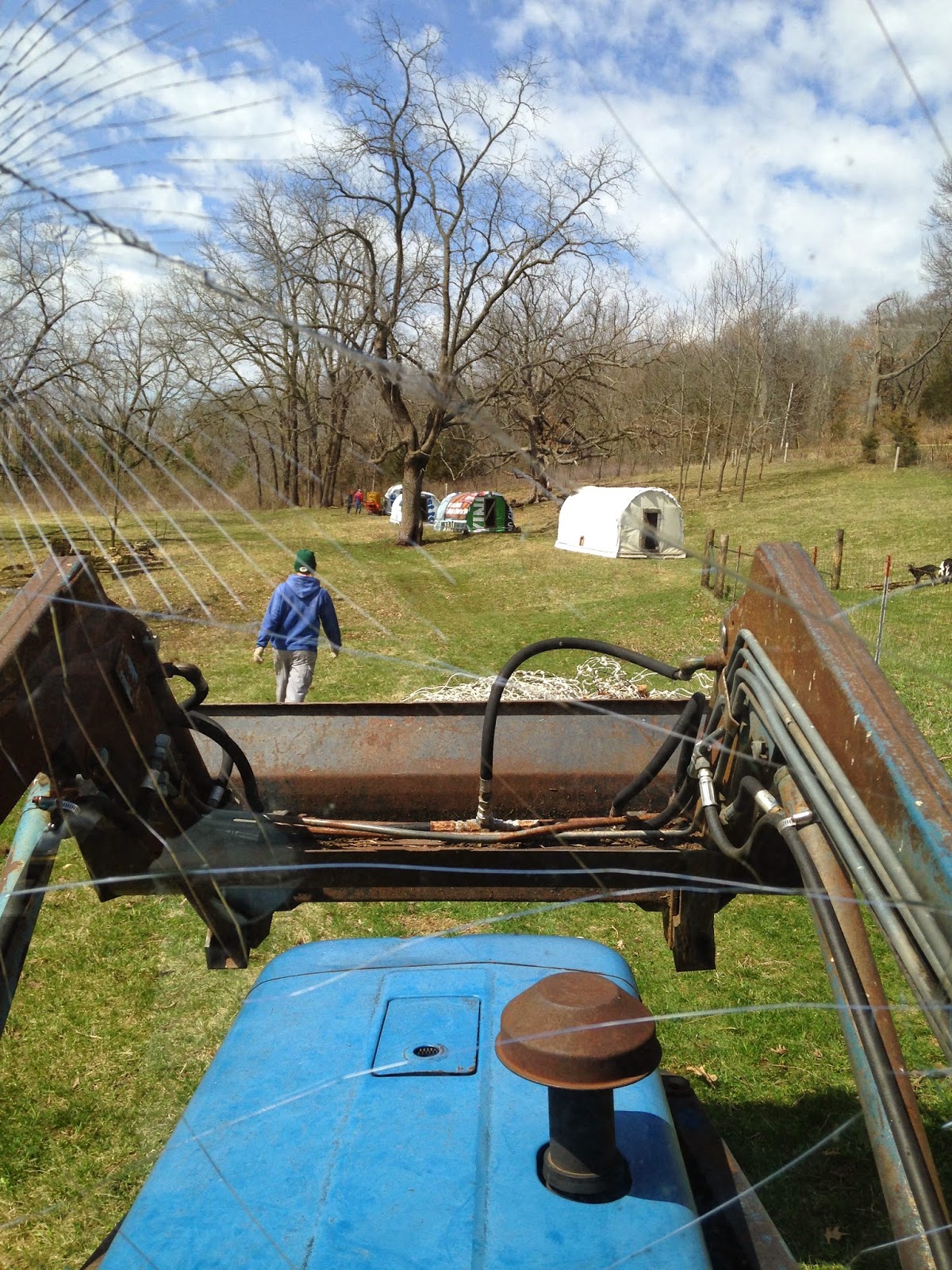
Nelle, our Jersey cow, calved on Sunday, June 28, ten days past her due date. She had a beautiful heifer calf and we named her Juniper. All seemed good until Monday afternoon when I went out to the pasture to bring Nelle in for milking. She was laying in the shelter but her baby was not with her. I searched the entire pasture and finally found Juniper in a different pasture, tucked in the tall grasses. I picked her up and carried her back to mom. When I came back 45 minutes later to get Nelle to the barn for milking, Juniper was gone again. Then I realized Nelle could not get up and her baby was hungry. I tried different ideas to get her up, but she just did not have the strength. I called my younger brother who runs the family dairy farm I grew up on. He is filled with lots of information so I figured he could help me out. But of course, it was his milking time also, so I did not get an answer. I finally opted to call the vet, knowing it was an "after business hours" call, but I was worried. The vet arrived about 30 minutes later and we headed to the shelter. She took Nelle's temperature, listened to her heart and felt her cold ears.

These symptoms showed that Nelle had milk fever, which happens when the body is low in calcium and pulls any calcium it can from the bones to make milk for it's baby. When that happens, the muscles react and lose their strength, making it nearly impossible to stand up. The vet gave her an intravenous of calcium and within 20 minutes Nelle was able to stand. As we were under a metal shelter, a storm came through, which happened to be a blessing because Nelle went straight to the barn and I was able to get her milked. We thought all was good, but the next morning Nelle could not get up again. The vet came out and gave her another intravenous of calcium. He mentioned that Jersey cows, in their older stages, are susceptible to milk fever. Well, it happened again the third day and the vet was back helping. But all is good now and Nelle is producing rich milk and baby Juniper is growing.
This season we have been moving our young doelings to new browse about every 3 weeks. This gives the adolescents good greens to chew on and keep them busy. Last Sunday Jim and I spent the afternoon moving all the fences to create a new browse pasture. I thought it would be a good idea to use some old existing barb wire fencing which was dense with growth for one long side of the pasture. Jim reminded me that they would get out through it, I agreed but said it would take a couple of weeks before that would happen. So we completed the pasture, moved the goats into it and all were happy. By Tuesday they were getting out through the barb wire lines and into the alfalfa field. By Wednesday, they were up on the road and visiting with walkers on the Ice Age Trail. I corralled them back to their pasture and put up poultry netting along the escape route. But they knocked that right over and headed to the road again. They are now in a different permanent pasture until we can set up new browse for them. They are growing well and will be joining the milking line next season.

People often ask us what we do in the winter. With animals, there is the daily care and feeding. In addition to those chores, Jim heads to the basement and works on a barn quilt. He has now completed 5 quilts in the last 3 years. They adorn our barns and buildings. He looks through my various quilt books and finds a pattern he likes and transfers it to plywood. This past winter, instead of going through quilt books, he got out our colorful geometric blocks from when our daughters were young. He played around with them and created his own design. Jim transferred this design to plywood, gave it many coats of colored paint and it now elegantly hangs on our milking barn.

Well, my brother Tim did return my phone call the next day. He was busy, but took the time to give me some advice. He was trying to cut hay and a hydraulic hose broke on his equipment. He took the hose to the farm implement dealer for a replacement, they could not get a new hose for three weeks! When hay is ready, it needs to be cut, so Tim had to rent a hay cutter for $50 per hour. We laughed together about our crazy week and gave each other a wish of luck for the next week.
Enjoy your week.
Diana and family




















































